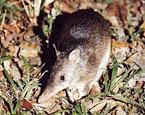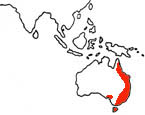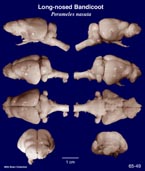|
Long-nosed
Bandicoot
(Perameles nasuta) #65-49 |
||||
|
|
Physical
characteristics and distribution
|
|
They
are largely insectivorous, though have been known to feed
on small mice, worms, snails, lizards, and plant material.
Perameles nasuta will scratch and dig for prey including
fruit tree root weevils and the larvae of the scarabacid
beetle. Perameles nasuta is found in Australian: E Queensland, E New South Wales, and Sydney. |
|
Description
of the brain
|
|
Animal
source and preparation
|
|
All
specimens collected followed the same preparation
and histological procedure.
|
Other Related Resources (websites and publications)
List of Specimens | Explore Collections | Brain Sections | Brain Evolution | Brain Development | Brain Circuitry | Brain Functions | Location and Use | Related Web Sites | Contact Us | Search MSU Database | Personnel | Home



